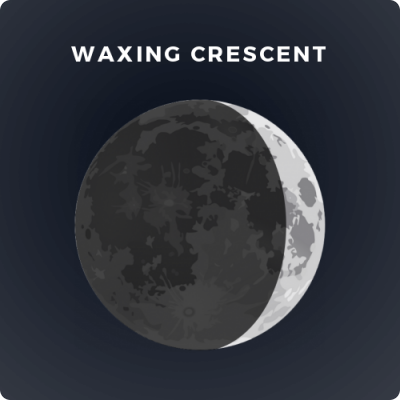
WEATHER + SKY WATCHING + RESOURCES
WEATHER
NOTE: POOR WEATHER
While stunning, a full moon can make it difficult to see anything beyond the brightest celestial objects.
TODAY’S LOCAL WEATHER
TODAY’S MOON PHASE
MOON PHASE PLANNER
TODAY’S VIRTUAL SKY
Map and Constellation Key to Messier Objects for TELRAD Finders
TOOLS TO VIEW THE NIGHT SKY
For information about the equipment at Custer Observatory Click Here
Your Own Eyes
You don’t have to have any special gear to do skywatching. For most people, our eyes are often the best way to enjoy observing. Your eyes can view panoramic views of the sky spanning 180 degrees, whereas a telescope shows only a tiny patch of the sky. Some sights are only visible with the naked eye – star patterns like the constellations, lineups of the planets, and the arc of the Milky Way, to name a few examples. And meteor showers are best experienced by simply lying down and looking up!
Binoculars & Spotting Scopes
Often, the answer to the question, “What is the best telescope for a beginning observer?” is “A pair of binoculars.” Perhaps their most significant advantage is their portability, ease of use, and generally lower price tag compared to telescopes. They come in a similar spectrum of sizes and cost. Binoculars will show you a wider area of sky than a telescope, which can be advantageous when observing objects like comets and close pairings of the planets with the Moon. They quickly reveal sights like star clusters, double stars, and the four largest moons of Jupiter, along with stars too faint to see with your eyes alone. Binoculars can be handheld, but they are a much more helpful tool when stably mounted on a tripod. (They also tend to be more enjoyable to use when mounted!) As the primary control mechanism is to focus them, binoculars are easier to use than all but the most uncomplicated telescopes. An even easier option is a spotting scope or monocular. Often used for birding and hunting, spotting scopes are as portable as binoculars, but they remove the need to adjust the two eyepieces to get a clear view.
Telescopes
Telescopes let you see objects your eyes can’t detect. Telescopes also are great for observing the planets, comets, the Moon, and brighter nebulas and galaxies. Telescopes come in many sizes and configurations – from fully automated, desktop-sized, point-and-click models you control with an app to large, open-frame scopes you can build yourself. They can be fully manual in operation – pointing them where you like using your hands – or driven by motorized mounts with computerized tracking systems.
What Kind of Telescope Should I Buy?
Tips on how to pick a telescope.
Cameras
Digital cameras can capture incredible views of the night sky, as they can take long exposures that capture light from faint sources, including dim stars and the Milky Way itself. Night sky photography can be an expensive hobby, but it doesn’t have to be. The essentials are just a digital camera, a lens that can open up to a wide aperture to collect more light, and a tripod for stability. (With lenses, look for ones with an aperture or “f-number” of at least f/3.5. Lower numbers, like f/1.8, are best because they mean more light-collecting ability!) Even the cameras in some smartphones can take decent night sky photos when placed on a stable surface or tripod. The main point to remember is that you can start skywatching tonight alone with your eyes and still observe some really interesting sights. The various tools available are just that – options to add to the experience. If you decide you’re ready to try scopes or cameras, remember you can start small and simple and work to greater complexity as your interest deepens. And, of course, if you’re more into armchair observing, NASA has tons of dazzling images from space telescopes and solar system exploration missions to marvel at.
Information is adapted from NASA
ASTRONOMY RESOURCES
Star Charts & Moon Phases
Seasonal Star Charts: Free, printable star charts for both hemispheres.
Northern Hemisphere | Southern HemisphereMoon Phases: Learn about the lunar cycle. View Moon Chart
Comparison of Star & Moon Charts: Find the best charts for naked-eye, binocular, and telescope use. Explore Charts
Monthly Night Sky Charts: Free, downloadable sky charts. SkyMaps.com | WhatsOutTonight.com
EarthSky.org: Daily updates on astronomy and space science. Visit Site
Astronomy Apps & Software
SkySafari Night Sky App: This is a highly rated app for stargazing. Sky Safari Astronomy
Deep-Sky Objects & Nebulae
What Are DSOs? Learn about galaxies, star clusters, and nebulae. Read More
Understanding the Universe
Astronomical Distances: Learn how scientists measure vast cosmic distances. More Info
What is a Parsec? Find Out
Planets’ Spins & Tilts: Watch NASA’s animation comparing planetary rotations. View Video
Why Do the Moon & Constellations Appear Upside Down in the Southern Hemisphere? Learn More
Understanding Twilight: How different twilight phases affect stargazing. Read More
Astronomy Orgs & Guides
Astronomical League: A national organization for amateur astronomers. Visit AL
Astronomical Society of the Pacific: Promoting astronomy education and outreach. Learn More
NASA’s Night Sky Network: Astronomy clubs sharing the universe with the public. Explore
Comprehensive Astronomy Resource List: Books, magazines, software, and more. View List
Stars and Constellations
Guide to Star Names & Constellations: Learn about star names, pronunciations, and meanings. Read Here
88 Officially Recognized Constellations: Their names, meanings, and locations. Explore
Skepticism & Pseudoscience
An Astronomer Looks at Astrology: A critical examination of astrology. Read PDF
Astronomical Pseudo-Science: Examining claims like UFOs and astrology. Learn More
LINKS TO RESOURCES
General Astronomy
Bad Astronomy
The Nine Planets
One-Minute Astronomer
The Budget Astronomer
Collimation & D.I.Y.
Collimation Explained
Collimation: Newtonian Reflector
Video: Newtonian Collimation
Video1: Schmidt-Cassegrain Collimation
Video2: Schmidt-Cassegrain Collimation
Home Built Astronomy


